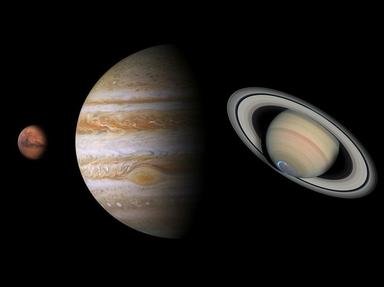Quiz Answer Key and Fun Facts
1. The crooked lines in this photograph belong to a canyon known as Valles Marineris. Where in the Solar System is this canyon located?
2. This photograph was taken by a spacecraft known as Magellan, which contained instruments that allowed it to see through this world's thick atmosphere and view its crooked surface. Where was this photo taken?
3. Voyager 2 captured a photo featuring the crooked surface of this moon, located in the outer Solar System. It is the only moon of its size to have a retrograde orbit around its parent planet. Which moon is it?
4. Images of this crooked ice formation were taken by a satellite that is designated as EOS AM-1. Which of the following worlds is being featured in this photo?
5. This crooked moon is named after a character from the play "The Tempest" by William Shakespeare. Which of these worlds is it?
6. The Cassini spacecraft took a photograph of the crooked surface of this icy moon. The moon features geysers that contribute to the formation of one of Saturn's rings. Which moon is this?
7. The crooked lines you see on this Jovian moon may be cracks on its icy crust, which may be hiding an ocean beneath it. What is the name of this moon?
8. These crooked lines were photographed by the Huygens spacecraft as it descended through this space object's atmosphere. Where in the Solar System is this?
9. The crooked line we see in this photograph is a ridge that stretches across the equator of this Saturnian satellite. Which satellite is it?
10. These crooked lines were sent back to Earth by the New Horizons spacecraft in 2015. Which of these far out places are we looking at?
Source: Author
RedHook13
This quiz was reviewed by FunTrivia editor
rossian before going online.
Any errors found in FunTrivia content are routinely corrected through our feedback system.
